
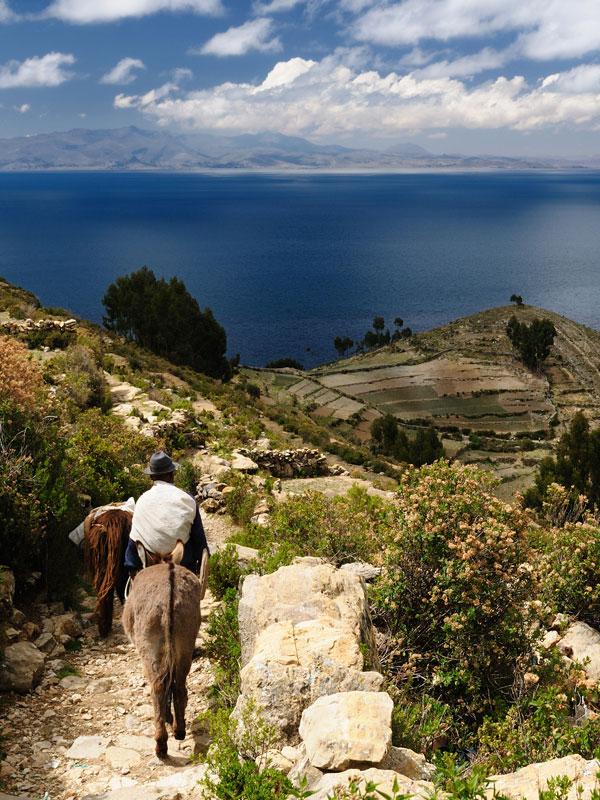
The deep blue waters of Lake Titicaca, the world's highest navigable lake, guard myriad remote islands. Here, where life moves at a slower pace, communities have preserved centuries-old traditions. From the lakeside city of Puno, board a speedboat and cruise to the floating Uros Islands. Venture yet further out to catch a magical sunset from secluded Isla Taquile. Encounters with local fishermen, artisans, and shepherds along the way will guarantee an unforgettable experience.
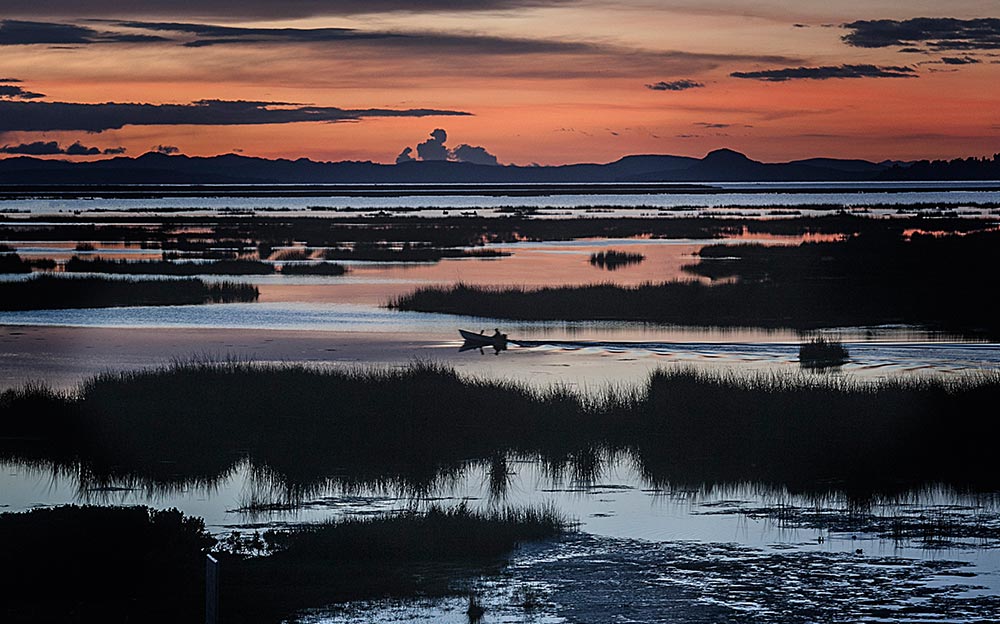
But the lake is not the Puno region’s only draw; it offers many archaeological delights. In the plateaus of the surrounding Altiplano lie numerous ancient ruins, dating back to pre-Inca civilizations. Explore the time-worn burial grounds of the Kolla people, and discover the sprawling metropolis of the Tiwanaku Empire.
As Peru\'s folklore capital, Puno also hosts many of the country\'s most lively festivals. Fortunate attendees witness elaborate processions, involving ceremonial dances and music. Performers fill the streets, adorned with colorful woven costumes, intricate masks, and traditional instruments. The region\'s exuberant customs represent a fascinating blend of Andean and Catholic beliefs.
The Titicaca National Reserve is located in the Puno region of southern Peru. The lake itself is almost the largest South American lake, second only to Brazil’s Maracaibo. Known as “Lago Titicaca” in Spanish, it sits on the border between Bolivia and Peru. The immense freshwater pool covers some 3,200 square miles (8,300 km²) and dates back 60 million years. Following a powerful earthquake, the Andes mountain range split in two, leaving behind a huge basin. In time, water from melting glaciers filled the hollow and Titicaca was formed.
More than 25 rivers empty water into Lake Titicaca, the largest of which is the Peruvian Ramis. The lake is also divided into two smaller bodies of water by the narrow Tiquina Strait. The southeast Bolivian body of water is the smallest, while the largest sits northwest, in Peru. Visitors can delight in exploring the 41 natural islands that emerge from Titicaca’s waters. Isla del Sol, the largest, lies just off Bolivia’s Copacabana peninsula.
Lake Titicaca’s population is distributed between lakeside towns and smaller island communities. The population of Puno Province totals approximately 228,000 people. Puno city is home to around 121,000 inhabitants.
Titicaca is the highest navigable lake in the world, with a surface elevation of 12,500 ft (3,810 m). The city of Puno sits at around the same elevation, meaning that altitude sickness is common. To avoid this drink plenty of water, avoid alcohol, and eat a high calorie diet.

The southern high plains, or altiplano region, of Peru has a semi-arid climate. Temperatures during the day are consistent throughout the year, with particularly warm afternoons. Once the sun has set, however, expect bone chilling nights. Despite low temperatures, the lake does not freeze and snowfall is unlikely.
From April to November
Dry season brings hours of sunshine to the Lake Titicaca area. The lake’s high elevation means that UV rays are strong, so sun protection is a must. Although temperatures are warm, strong winds often blow across Titicaca’s plains during these months.
From December to March
During the wet season, Lake Titicaca is often shrouded in mist and low-lying clouds. Visibility can be poor and rain is more likely. Although downpours do not occur daily, they can be heavy and accompanied by lightning, causing trails to close. The area experiences its highest rainfall in January.
Lake Titicaca welcomes the most visitors between June and August, at the peak of the dry season. Days are warm and precipitation is low, but nights are freezing. For those wishing to avoid the crowds, April and May can be a good alternative. During these months immediately after the wet season Titicaca’s lush flora bursts into life.

The closest airport to Lake Titicaca is Juliaca Airport (code: JUL). Located in the nearby city of Juliaca, it is 28 mi (45 km) from Puno; about a 1-hour car ride. Daily flights depart from Juliaca to Lima and Cusco.
Flight durations:
If arriving by air, a representative from Inca Expert Travel will be waiting for you. Look for your representative outside the baggage claim area holding a sign with your name on it. If you arrange your own transportation, we recommend using one of the licensed taxi companies inside the airport.
Comfortable bus tours from Cusco to Puno are a good option. The approximately 9 hour journey makes a few stops for guided visits at important pre-Columbian and colonial sites. Highlights include Raqchi Temple and Andahuaylillas, the “Sistine Chapel of America.”
Similar first class bus tours operate between Colca Canyon and Puno. This route takes approximately 12 hours, including lunch at a restaurant and stops along the way. Guided visits include various stunning Colca Canyon viewing points and Maca village. If traveling from Arequipa, a one night stopover in Colca Canyon is added.
A little more than 1 mi (2 km) southeast of Puno’s main square is the Terminal Terrestre. This terminal houses Puno’s long-distance bus companies. Paved roads connect Puno to other main cities, including Cusco and Arequipa.
Journey durations:
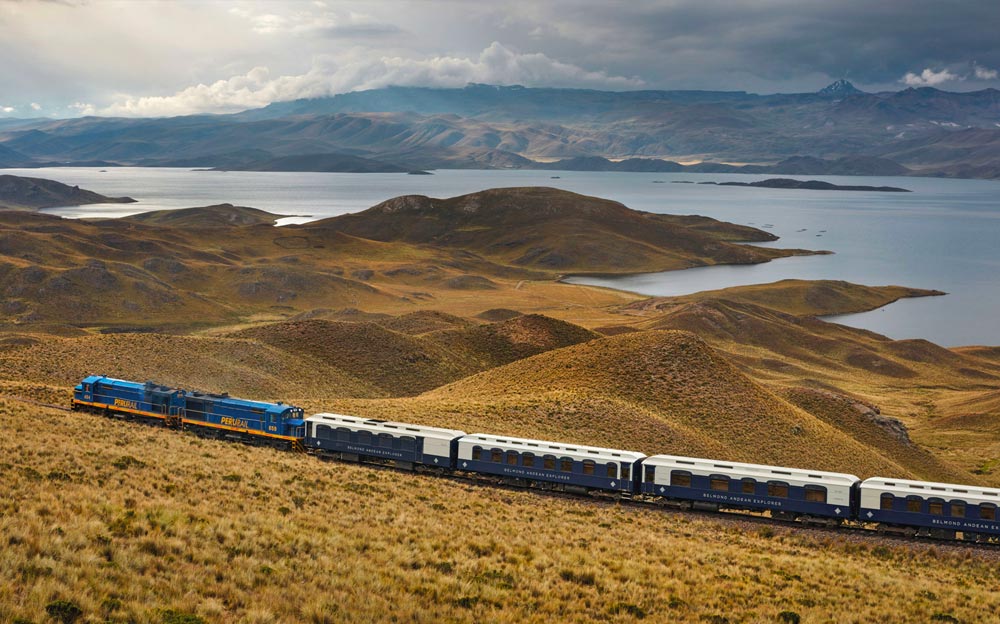
It is possible to travel by train between Lake Titicaca, Cusco, and Arequipa. The Belmond Andean Explorer is a first-class train connecting the three destinations. One of the most scenic rides in South America, the tracks weave through the Peruvian Andes. Starting in Cusco, the route stops in Puno and ends in Arequipa. Itineraries are one or two nights long and the journey can be done in reverse. This is the most luxurious way of getting to Lake Titicaca from Cusco or Arequipa.
The PeruRail Titicaca Train also connects Cusco and Puno. This train ride through the high Andes lasts approximately 10.5 hours. While no stops are made, the service and amenities on board are opulent and the views picturesque.
Both train routes have set departure dates, making advanced planning a necessity.
Lake Titicaca lies between Peru and Bolivia. Crossing the border between the two countries is thus relatively simple. Travelers must pass through Yunguyo, which is about 2.5 hours by car from Puno. From there, visitors can obtain a visa and pay the Bolivian reciprocity fee if required. Most tourists then continue by bus to Copacabana or La Paz. Note that crossings onboard ships are no longer possible due to increased border regulations.
It is possible to cross the border directly from other cities in Peru. The bus route from Cusco to Copacabana stops briefly in Puno and totals approximately 14 hours. Traveling from Arequipa to Copacabana by bus will take around 8 hours. A stopover at Lake Titicaca is highly recommended to appreciate the area’s beauty, and also break up the journey.
Long before the rise of the Inca Empire, the indigenous Kolla people inhabited the high plains of southern Peru. Between 900 AD and 1500 AD the Kolla possessed a vast territory. The capital of their immense kingdom, Hatunqulla, lay 21 miles (34 km) north of modern day Puno. The Kolla are known for their construction of tall, cylindrical burial tombs, known as "chullpas". Sillustani, an archaeological site close to Puno, comprises many of these striking structures.
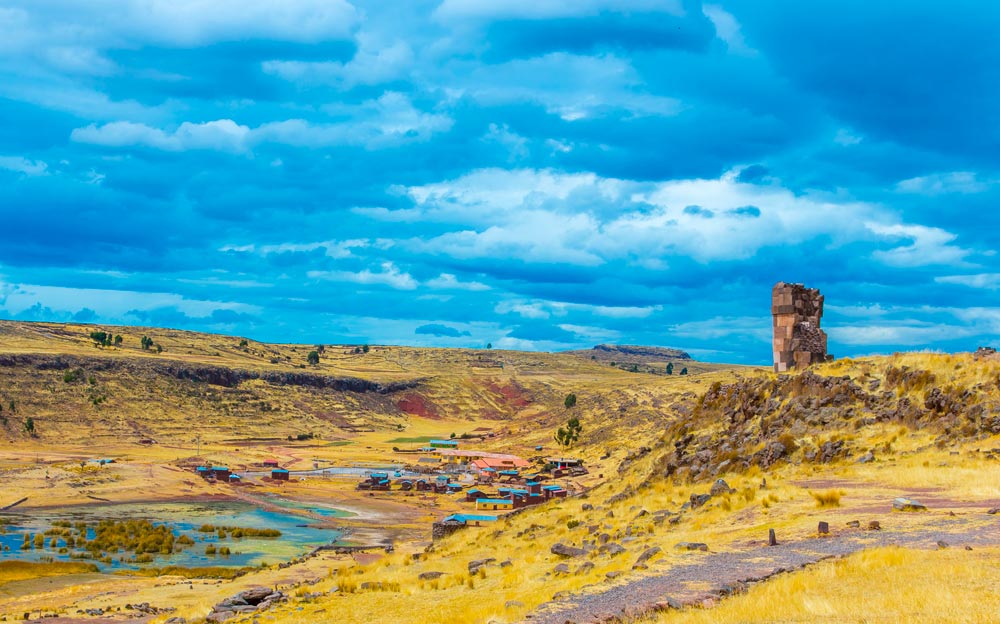
Lake Titicaca was a sacred place for the Inca people. They believed that Huiracocha, the creator deity, was born from the depths of its waters. He created the sun, moon, stars, and mankind by breathing life into small stones. According to myth, the immense body of water was also the birthplace of Inca royalty. The first Inca governor, Manco Capac, and his wife, Mama Ocllo, are said to have emerged from the lake. This story of creation is still widely recounted throughout the Andes today. It is one of the many mythical tales that highlight the unique heritage of the region.
In the 16th century Spanish settlers conquered the Inca civilisation. The town of Puno quickly became an important port and mining hub for silver and various minerals. The city was in fact originally named "San Carlos de Puno", in honor of Spain\'s King Charles II. During this period, Catholic missionaries began to settle and convert locals to their religion. This Christian influence resulted in the emergence of strong superstitions in the region. Lavish celebrations venerated holy Catholic saints, while native Quechua traditions still lived on.
Legends of an elaborate, gold-rich city at the bottom of Lake Titicaca have circulated for centuries. Tantalizing rumours of submerged Inca treasures lured Spanish conquistadors to the lake in the sixteenth century. It wasn’t until the year 2000, however, that any evidence of these watery ruins was found.
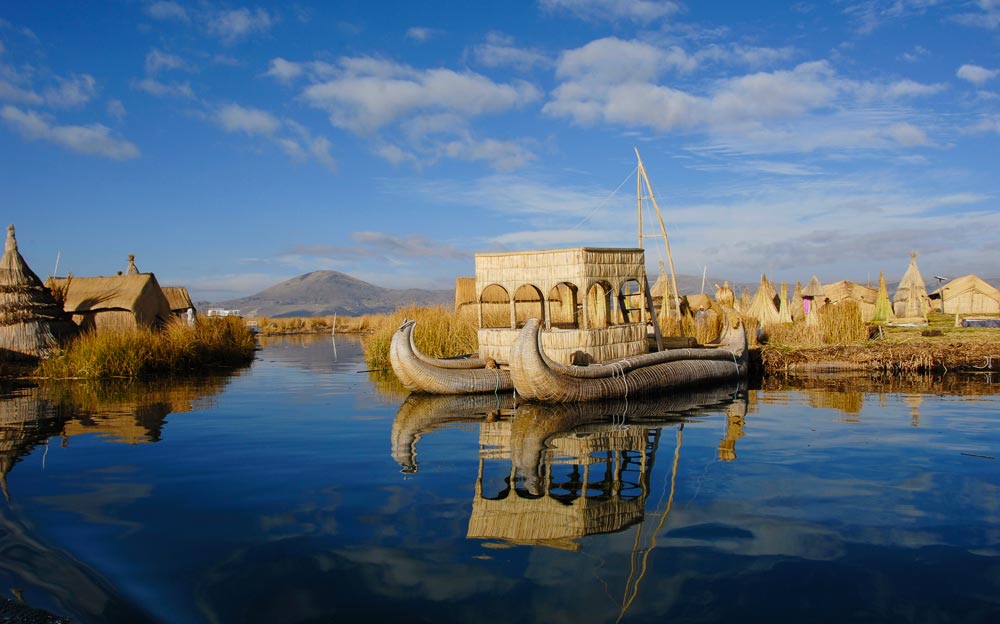
During a series of more than 200 dives, a team of international scientists discovered a large complex of ruins. The underwater city comprised religious temples, agricultural terraces, and roads. Historians estimate that the structures pre-date the Inca culture and could be 1,500 years old. There are an astounding 24 submerged archaeological sites. It is likely that the Aymara people constructed the city on dry land and it was later flooded. The Bolivian government has announced that it will open a museum showcasing the Lake Titicaca underwater ruins to the public.
Discover Uros, a series of floating islands in Lake Titicaca. Here, layers of totora reeds, grown in the lake, are woven together to create floating surfaces. The founders of these islands, the Uru, are an ancient people indigenous to Peru and Bolivia. Threatened by the Inca invasion, they fled the mainland to set up home in the center of the lake. They have inhabited these fascinating man-made reed islands for centuries since.
A community of around 1,200 Uru people live on the islands, but others have returned to the mainland. Islanders rely on fishing, weaving, and tourism for their income. Visitors are invited to tour thatched homes and sail in Peruvian reed boats. Locals also demonstrate how they maintain the woven reeds used to create the islands. Although the Uros Islands are more crowded than other Titicaca islands, their history is no less enchanting.
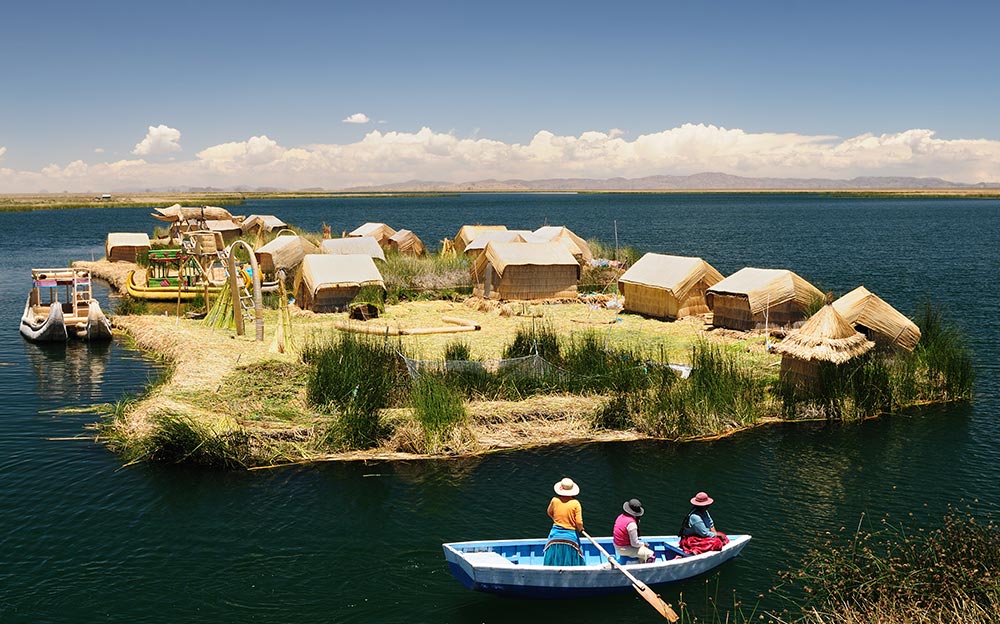
Situated some 22 mi (35 km) from Puno’s port, Taquile Island does not experience much tourism. Residents are known for their production of fine textiles. Unlike other textile communities, the island\'s male population undertakes much of the work. While women carry out weaving tasks on looms, men are skilled at knitting. In 2005, UNESCO declared Taquile\'s textile art as a “Masterpiece of the Oral and Intangible Heritage of Humanity”. Look out for vivid traditional garments, in particular the intricately woven chullo hat.

Travellers looking for an authentic island experience often favor Amantani Island. The largest of the Peruvian islands, Amantani is also one of the most remote. As a result, few tourists make it here. Those that do often choose to visit with a local family for a Lake Titicaca homestay.
Explorers of Amantani will discover spectacular hilltop temples and centuries-old agricultural terraces. Like their Inca ancestors, the residents’ main economic activity is farming. Locals cultivate several varieties of potato, quinoa, and corn, and often enlist tourists as helpers for the day.
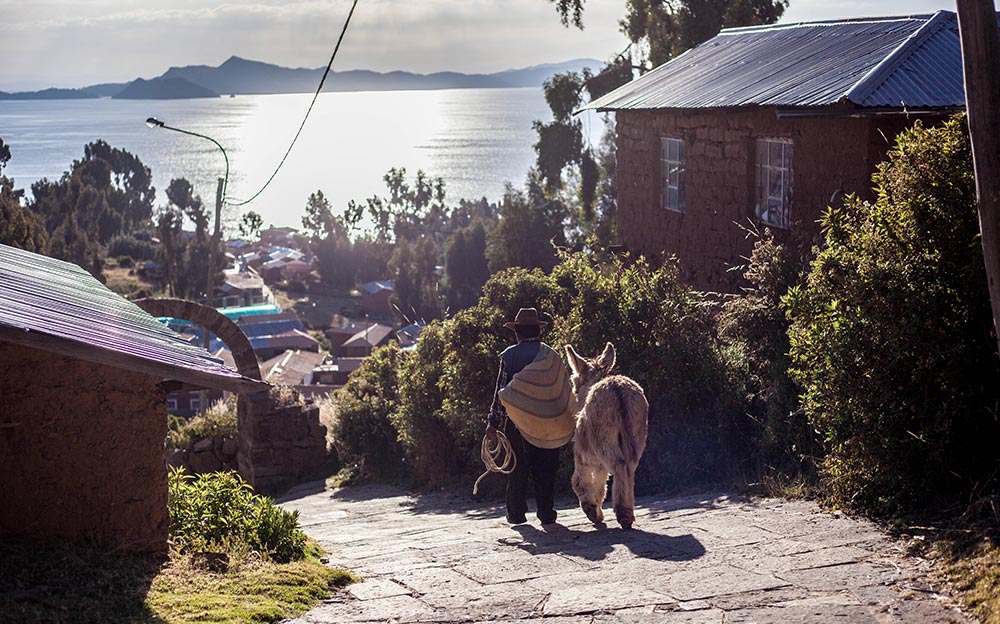
Sail 4 hours from the Puno shore to arrive at the serene Suasi Island. Home to a luxurious country house hotel, Suasi is Titicaca’s only privately owned island. The resort offers guests the chance to fully immerse themselves in nature. Visitors can enjoy kayaking tours, island walks, and the use of beautiful private gardens.
Isla del Sol, or “Sun Island”, is located in the southern part of Titicaca, in the Bolivian lake. According to legend, it is from here that Huiracocha, the Inca creator god, arose. The mountainous island, covered in eucalyptus trees, is thus home to many sacred sites. Walk one of the island’s numerous trails to discover over 80 ruins scattered across the hills.
Chincana is perhaps the most well-known of the Lake Titicaca ruins. Thought to have once functioned as an Inca palace, it is also known as “the Labyrinth”. Within its maze of winding walls visitors will find a small well, believed to contain holy water. Reach the ruins by hiking the Willa Thaki trail, sometimes referred to as “the Sacred Route of the Eternal Sun.” Climbing this ancient path will reveal magnificent views of the surrounding waters.
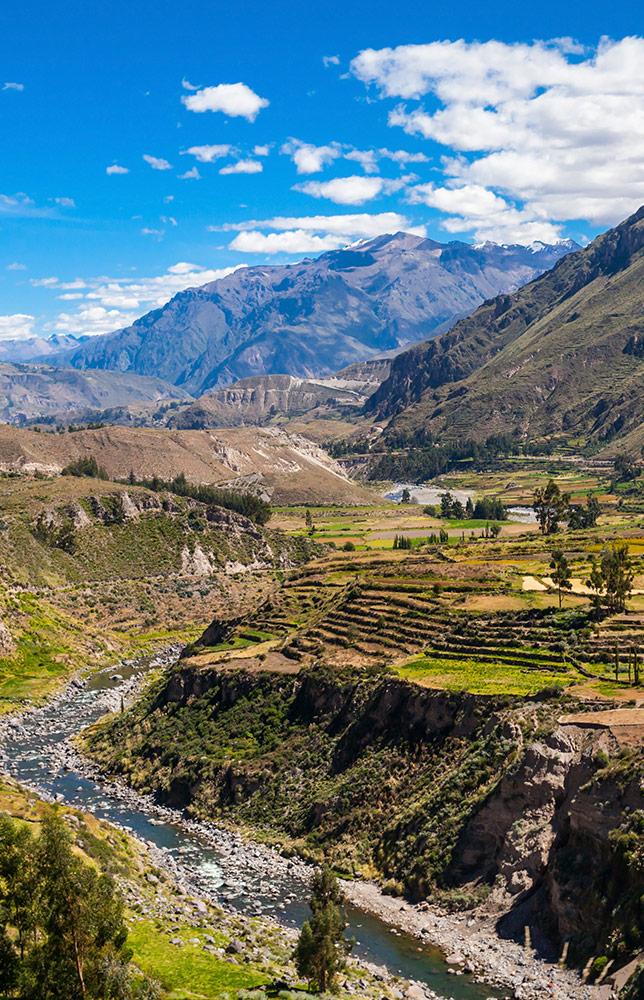
17 days
Amazon Rainforest, Cusco, Lima, Machu Picchu, Puno & Lake Titicaca, Paracas, Sacred Valley, Arequipa, Colca Canyon
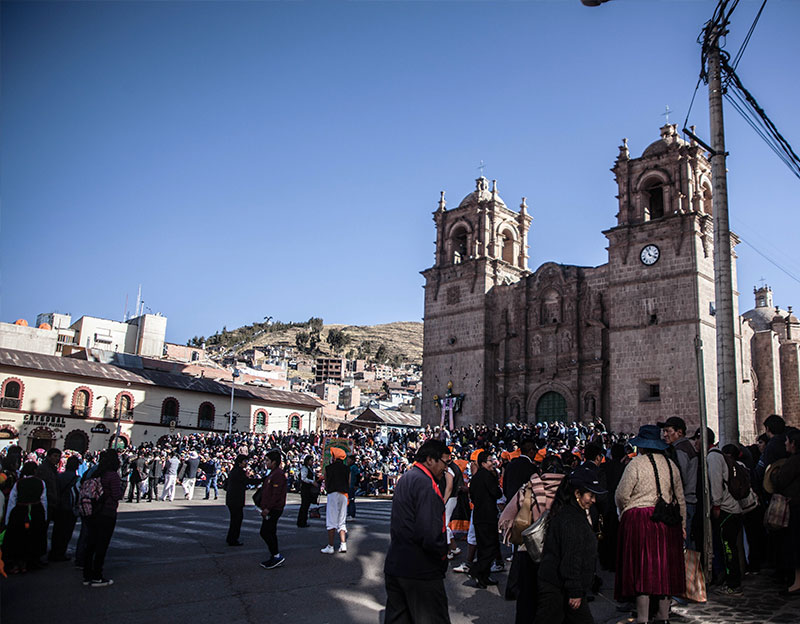
Serving as the gateway to Titicaca Lake, boat tours to visit the intriguing islands depart from Puno’s harbor. But the city itself is well worth visiting too. Dating back to the colonial period, the Puno Cathedral presides over the city’s main square. With robust towers crafted from volcanic rock, its design is a testament to the skill of local stonemasons. Other points of interest include the Carlos Dreyer Museum and the Yavari Boat Museum.
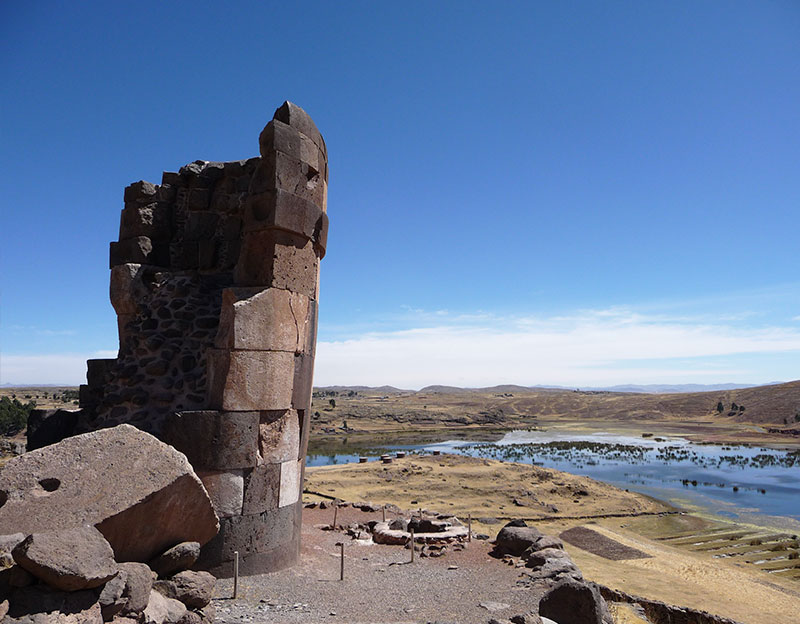
Ancient stone burial towers, called “chullpas”, comprise the Sillustani Ruins. The pre-Inca indigenous Kolla people used this site as a resting place for members of their elite. They encased mummified bodies and other valuable artifacts inside the cylindrical tombs. The site’s location, on the shore of peaceful Lake Umayo, offers stunning vistas of high desert plains. Journey just 20 mi (30 km) northeast of Puno to visit this pre-Inca cemetery.
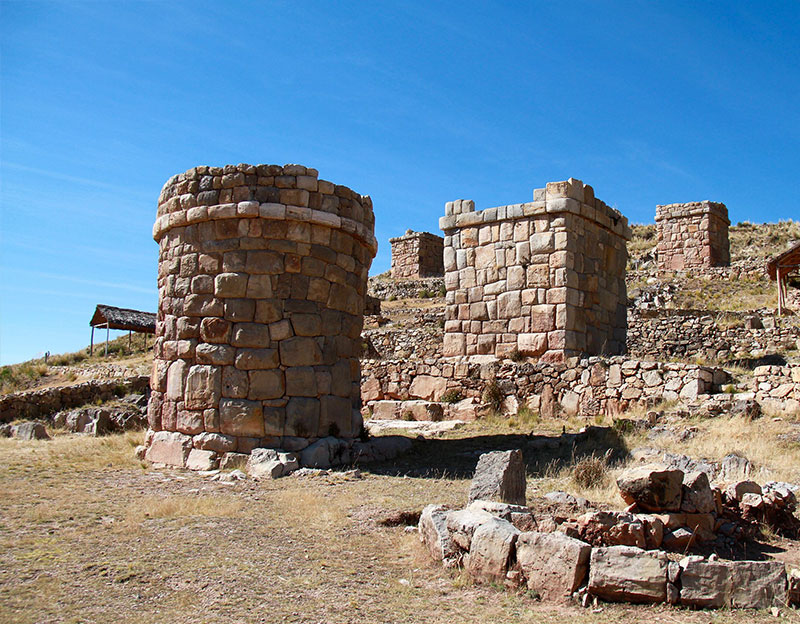
Like Sillustani, the Cutimbo archaeological complex consists of many stone chullpas. First erected by the Kolla people, the Lupaca and Inca cultures also made use of the sturdy burial towers. Here, archaeologists not only discovered the bodies of noblemen interred inside the tombs. The remains of women and servants were also encased alongside. Cutimbo\'s chullpas are rectangular or cylindrical in shape, and feature fine zoomorphic reliefs. Cutimbo lies around 15 mi (25 km) south of Puno city.
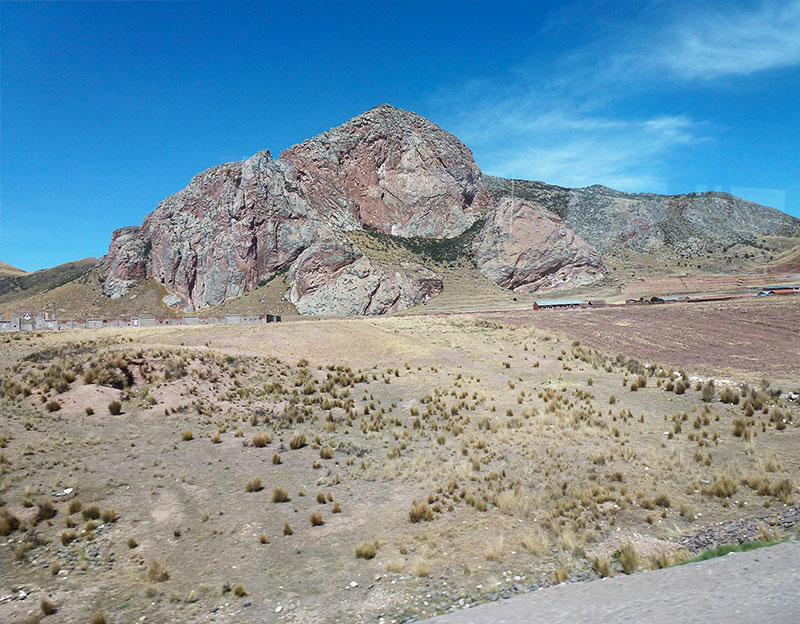
Spread over an area of around 2.5 mi (4.2 km), the Pukara archaeological site is vast. Historians believe Pukara to be the first urban center in the region, dating back to as early as 500 BC. 9 pyramids, crafted from stone, make up the cultural center. Archaeologists have also discovered sculptures of various mythological figures in the area. Stone carvings of snakes, frogs, fish and pumas are on display at the Pukara Lithic Museum. Pukara is situated 60 mi (100 km) from Puno.
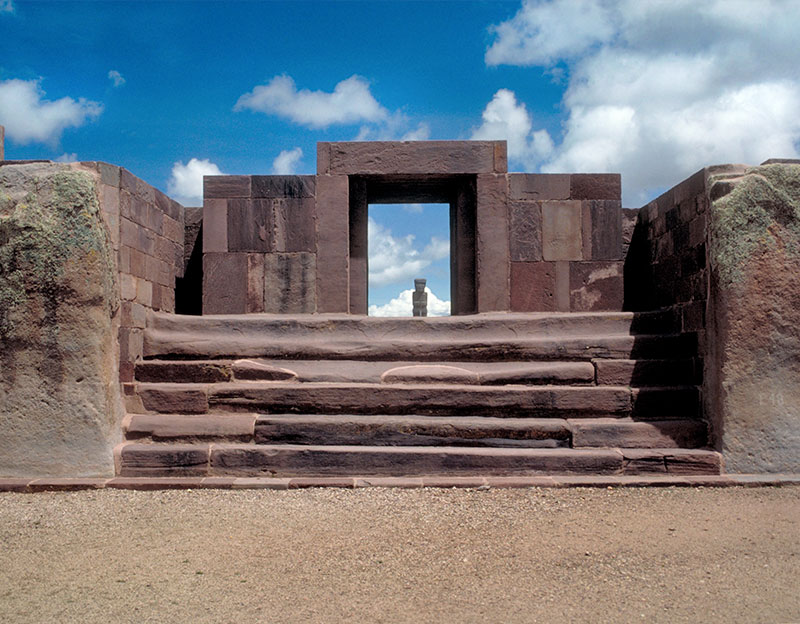
Tiwanaku (also spelled Tiahuanaco) was once the capital of a powerful pre-Columbian civilization. At its peak between 500 and 900 AD, the Tiwanaku empire dominated a large area of the Southern Andes. Today the ruins of the metropolis, located in western Bolivia, are a UNESCO Heritage Site. Take a day trip from the Bolivian side of Titicaca and marvel at the Kalasasaya Temple, the principal structure. This ancient ceremonial center features the intricately carved Gateway of the Sun. Look out for the striking etching of a powerful gatekeeper, wielding two staffs, at the top of the archway.
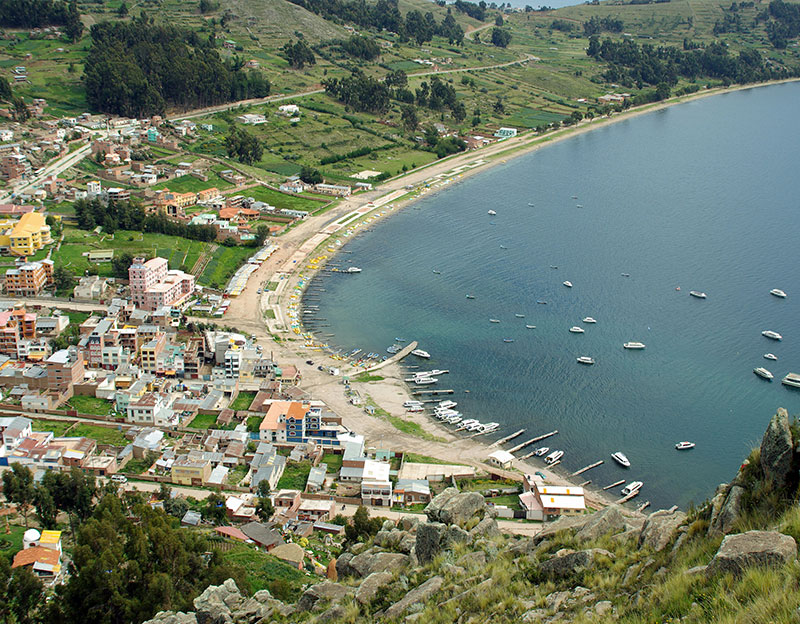
Located in Bolivia, Copacabana is a lakeside town known for its red-roofed houses. It is much smaller than its Peruvian counterpart, Puno, and offers great access to Isla del Sol. Many visitors climb Copacabana’s Cavalry Hill in the early evening to admire picturesque sunsets over the lake. Another popular attraction is the 16th century Basilica of Our Lady of Copacabana. Built in the Moorish mudejar style, this stunning cathedral also features colorful Portugeuse azulejos tiles. Many travelers use Copacabana as a stopover between southern Peru and La Paz, the highest altitude capital city in the world.
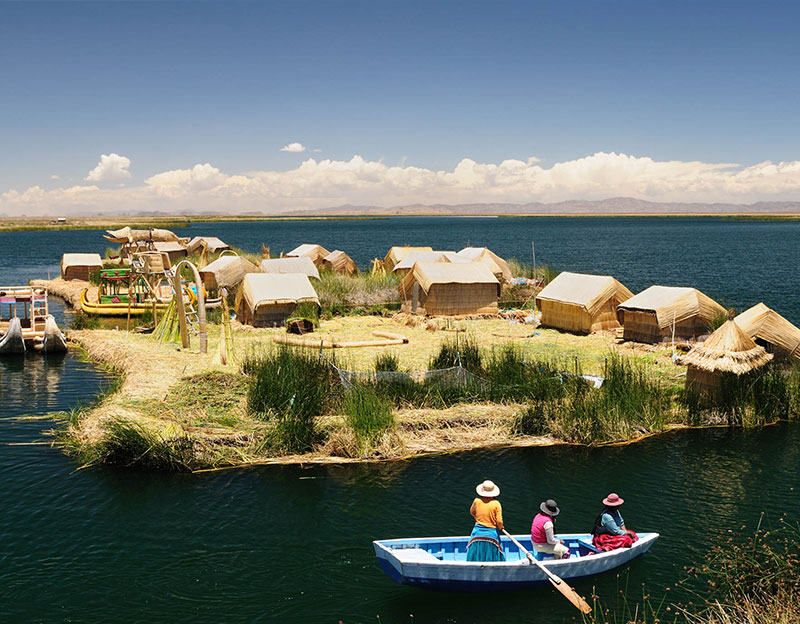
There is no need to struggle choosing which of Titicaca’s islands to visit. A full-day island hopping is one of the most popular tours of Lake TIticaca. It allows you to experience the lake’s main highlights in a limited time. A 30 minute boat ride will take you to Uros, to witness the unique culture of the Lake Titicaca floating islands. Following this, tours venture further into the lake, towards Taquile. Here, visitors marvel at the community’s colorful textiles before returning to Puno.
Longer multiple day tours are available. These often include accommodation on either Suasi or Amantani Island.
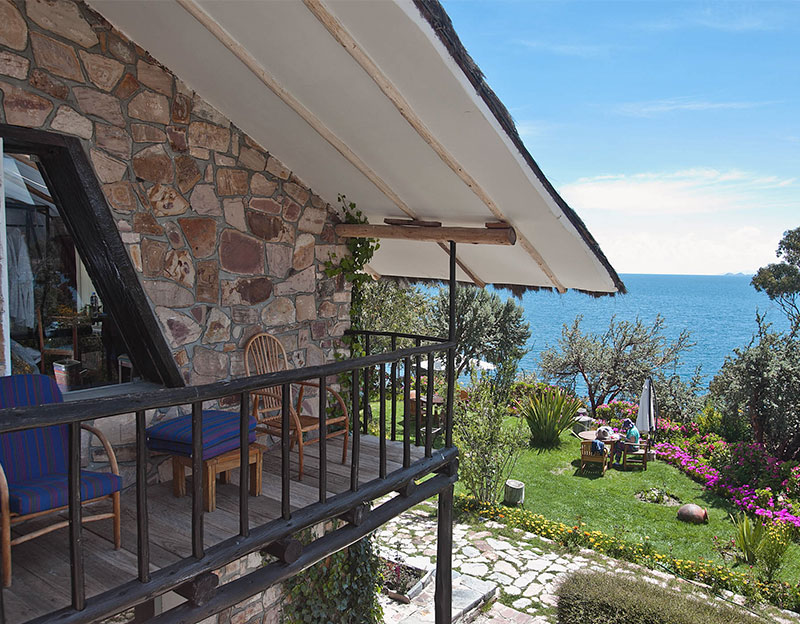
Isla Suasi’s exclusive lakeside resort offers unrivaled serenity. For a luxury retreat, spend a few nights at the island’s country house. With alluring landscaped gardens and terraces, the island offers guests the opportunity to enjoy the beauty of Titicaca’s landscapes. Hike trails, kayak in the gentle waters, or head to the spa for a massage or facial. Isla Suasi is the ideal place to relax.
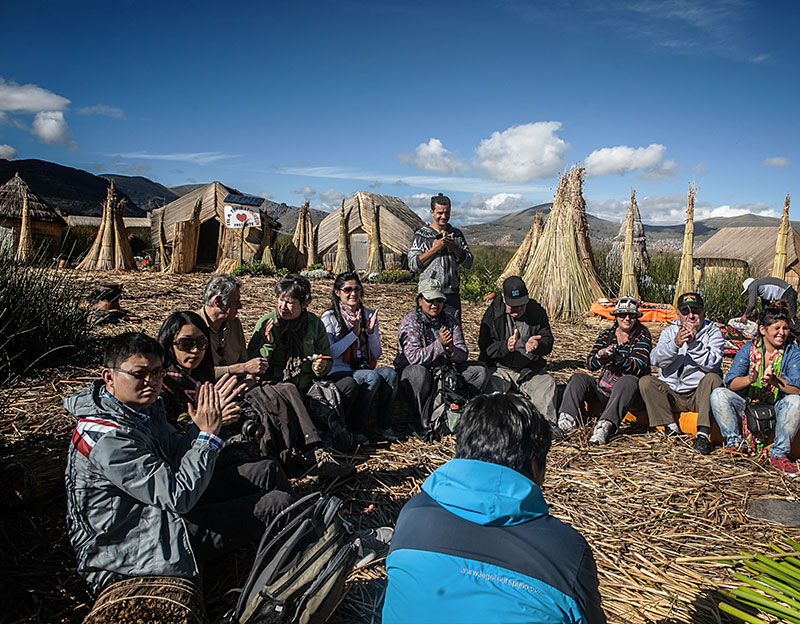
For an intimate insight into island life, arrange to stay with a local host family. Homestay tours are possible on Uros, Taquile, and Amantani island. Communities invite guests to participate in traditional activities, such as fishing and weaving. Overnight accommodations are modest but comfortable, with no electricity or running water. Learning about native customs from locals will make for an unforgettable cultural exchange.

Most travelers start their Titicaca cruise experience from Puno. Cross the Peru-Bolivia border to arrive at Copacabana harbor. Here, luxury catamaran cruises depart for beautiful Isla del Sol. Tours include visits to various ceremonial ruins, such as the Inca Steps, as well as the Inti Wata Cultural Complex. As part of this tour, tourists also have the opportunity to sail in Lake Titicaca reed boats.
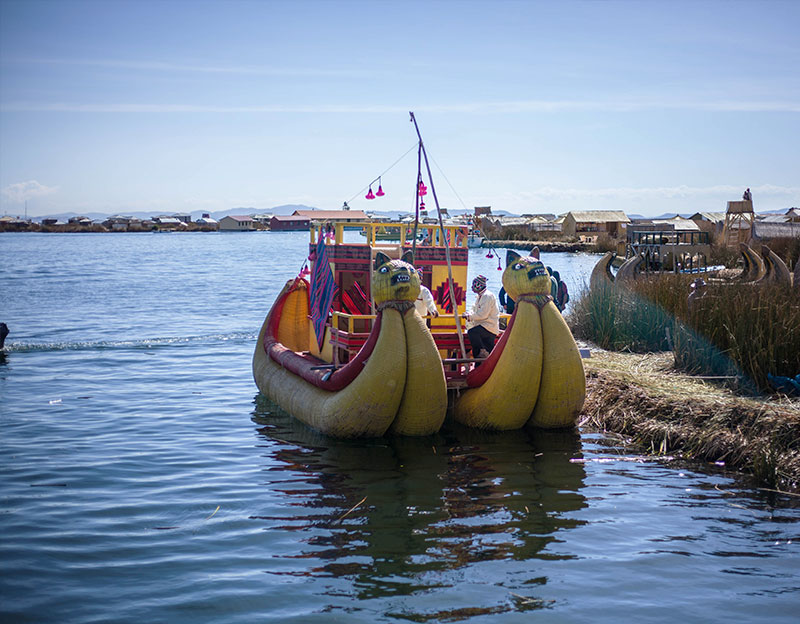
Those searching for adventure will doubtless enjoy kayaking on Lake Titicaca’s shimmering waters. Companies offer kayaking tours to various islands, including Uros and Taquile. It is also possible to combine kayaking with conventional island hopping tours. Necessary safety equipment is provided, but it is advisable to remember your own sun protection.
As the hub of Peruvian folklore, Puno hosts many of the country’s most elaborate festivals. Peruvian beliefs and celebrations often showcase a mix of Aymara, Quechua, and Catholic traditions. The Fiesta de la Candelaria is one such cultural display of Catholic and Andean fusion. Held every year in February, the festival is UNESCO recognized. Approximately 50,000 dancers and 15,000 musicians perform in celebration of Puno’s patron saint, Virgen de la Candelaria. Performers adopt brightly colored costumes, masquerading as dragons, knights, and birds. Visitors will wonder at the vibrancy of the celebrations, as the sound of bells resonates throughout the city.
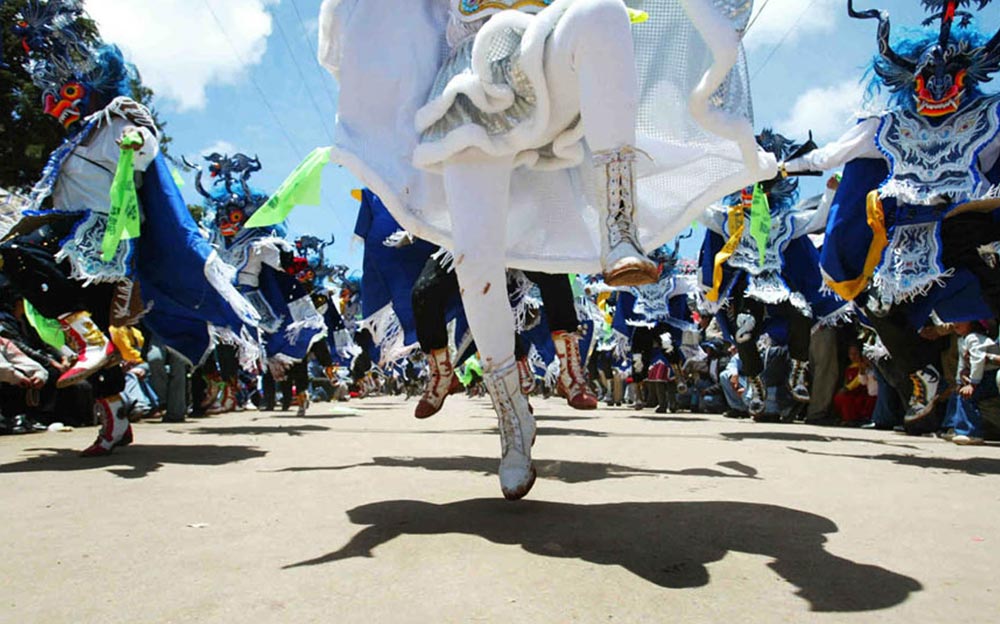
Semana Santa, or Holy Week, begins on Palm Sunday in Puno. At dawn, residents flood the main square to watch lavish religious processions. An ornate float, bearing the image of Christ, emerges from the doors of the cathedral and is carried aloft through the city. Churches in Puno hold as many as 6 masses on Palm Sunday, so that devotees can receive palm crosses. In the days that follow believers attend more parades and feast with their families. The most devout even make the strenuous pilgrimage to the summit of nearby Azoguini Hill.
La Fiesta de las Alasitas y de las Cruces is a unique event, centered on Puno’s artists. A religious procession marking the crucifixion of Christ kicks off proceedings. Residents of Puno and the surrounding areas then trade miniature artisan handicrafts in diverse fairs. These markets flood the main streets of each city. Artists model their handicrafts on various objects of desire. Trinkets often resemble houses, cars, and money. Not limited to Peru, Bolivian artists also participate in this festival.
Celebrations on November 4th mark the anniversary of the founding of Puno in 1668. Annual events include culinary festivals, Quechua dances, live concerts, and fireworks. This is one of the city’s largest celebrations, second only to the Candelaria Festival. Much like during Candelaria, on Puno Day energetic processions of masked dancers and musicians fill the streets.
Some of the best options for eating in Puno are hotel restaurants. Many hotel menus feature delectable local and Peruvian dishes, without having to travel from the lakeside into the city. For those wanting a change of scenery, the following restaurants offer quality cuisine and a welcoming atmosphere.
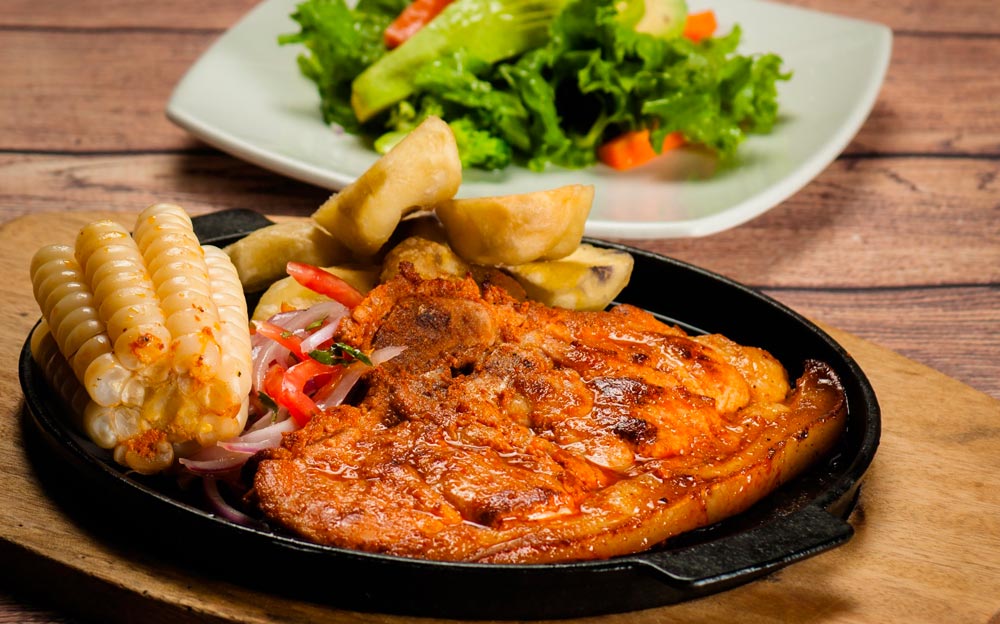
Lake Titicaca is a high elevation location; higher than Cusco by about 1,300 ft (460 m). Mild symptoms of altitude sickness are common, including headaches, nausea, and loss of appetite. Each person responds differently to high altitude. Unfortunately there is no way to predict how seriously it may affect you.
Preventative measures include eating light meals with high calories, and drinking plenty of water. You should also avoid alcohol. Talk to your doctor about preventive medication.
If you plan on taking an island hopping tour of Titicaca, motion sickness is a possibility. Waters can become rough, so bring medication if you are prone to nausea.
Traveling around Puno
Attractions inside Puno city are within walking distance of the main square (Plaza de Armas). If you are staying at a hotel outside the center, ask reception staff to order a taxi into the city. The city is a 15 minute drive from most lakeside hotels.
Boat tours to Lake Titicaca’s islands usually depart from Puno harbor, or private docks. Transportation to the dock will be included in most tours.